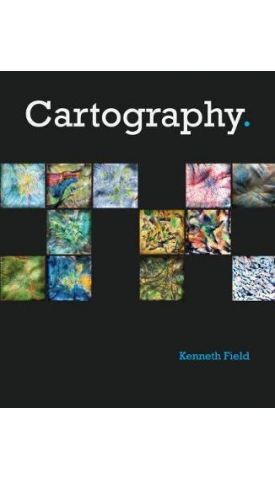אנו משתמשים ב-Cookies כדי לשפר את החוויה שלך. כדי לקיים ההנחיה החדשה של e-Privacy, עלינו לבקש את הסכמתך להגדיר את ה-Cookies. קבלת מידע נוסף.
655.00 ₪
Cartography
655.00 ₪
ISBN13
9781589484399
יצא לאור ב
Redlands
זמן אספקה
21 ימי עסקים
עמודים
460
פורמט
Paperback / softback
תאריך יציאה לאור
30 בינו׳ 2018
A lavishly illustrated reference guide, Cartography. by Kenneth Field is an inspiring and creative companion along the nonlinear journey toward making a great map.
A lavishly illustrated reference guide, Cartography. by Kenneth Field is an inspiring and creative companion along the nonlinear journey toward making a great map. This sage compendium for contemporary mapmakers distills the essence of cartography into useful topics, organized for convenience in finding the specific idea or method you need. Unlike books targeted to deep scholarly discourse of cartographic theory, this book provides sound, visually compelling information that translates into practical and useful tools for modern mapmaking. At the intersection of science and art, this book serves as a guidepost for designing an accurate and effective map.
| עמודים | 460 |
|---|---|
| פורמט | Paperback / softback |
| ISBN10 | 1589484398 |
| יצא לאור ב | Redlands |
| תאריך יציאה לאור | 30 בינו׳ 2018 |
| תוכן עניינים | Introduction Making maps is easy Making great maps is hard 1. Maps as Information Products The nature of an information product What is design? Trends in map design Functional design Designer, data and audience Engineers vs Designers vs Map Makers Simplicity and complexity Form and Function Dispersal and Layering Telling stories (metaphors and simile) Minimalism and efficiency Novelty or redundancy Data density Originality Emotional response Integrity Self-explanatory focus Wayfinding maps Experiential maps Numerical and statistical maps Production paradigms Viewing paradigms 2. Perceptions and Conventions The way the eye and brain works Vizualising for the mind Logically coding points Pictograms vs Icons vs Symbols Logically coding lines Logically coding areas Connotations of form Connotations of colour Mixing and using colours Colour constraints Connotations of value Working in greyscale Connotations of typeface Labelling hierarchies Making connections on the map Consistent denotation Innovation and familiarity Compare and contrast Ways of seeing Navigating the page Navigating the screen Navigating the mobile device Factual understanding vs Interpretation 3. Objective Dimensions Information overload Selection by feature type Selection by numbers Dimensional comparison Measurement of Earth Scale Distances Spheres and elipses Datums Latitude and longitude Geographic coordinates Projected coordinates Numerical integrity Making numbers meaningful Geographical distortions Projection distortions Projection families Choosing a good projection Compromising geographical form Geography as a diagram Measurement and proportions Absolute data Percentages, ratios and rates Comparatives Summarising data distributions Classifying data 4. Structure and Organisation Dispersal vs Layering Grids in information design Organisation and response Generalising features Styling features Graphical hierarchies Contrast Actors and support cast Repetition Proximity Balance Staging hierarchies Which way is up? Signs and pointers Focussing attention Distractions Language and phraseology Choosing a font Serif Sans serif Font efficiency: width, height, size Font efficiency: structure, form, direction, colour Typeface differentiation Legibility Type placement The small print (marginalia) 5. Pick'n'Map Choropleth Isarithmic Dot Density Binning Dasymetric Value by alpha Cartogram Flow Network mapping Schematic diagrams Isochrones Graduated Symbol Proportional Symbol Unique Values Bivariate mapping Multivariate mapping Embedded charts Small multiples Chernof Faces Proportional text 6. Different viewpoints Planimetric Panoramic Isometric Aspect Prism maps 3D isolines Mapping change Animation Dynamic variables Temporal 7. Going digital - the UI/UX challenge Map Mashups The 2 second rule Resolution Size Performance Responsive maps Interaction Capabilities Native v Browser apps Partial attention Time and day Inputs Connectivity Currency Personalising the map experience User testing Eye tracking Wireframes Workflow Prototypes Development technologies |
| זמן אספקה | 21 ימי עסקים |



Login and Registration Form